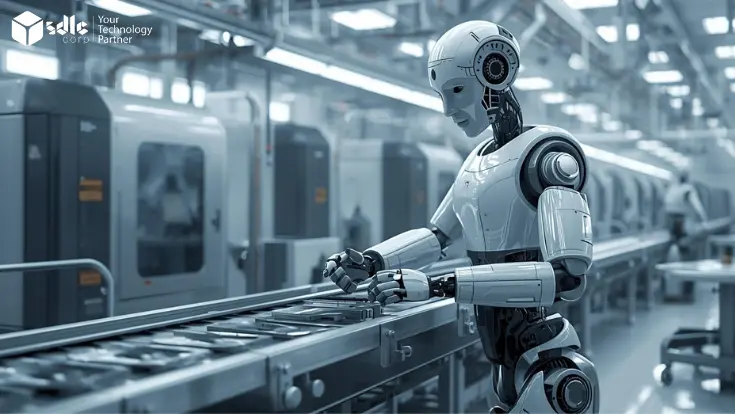Introduction
The world of virtual reality game development has taken significant strides over the past few years, introducing immersive gaming experiences that push the boundaries of interaction. Among the innovative technologies that enhance VR experiences, motion synchronization plays a crucial role. The RotoVR Explorer, a motorized VR chair designed to enhance virtual reality immersion, brings unique functionality to the table. It allows users to naturally rotate and move while seated, reducing the motion sickness often associated with virtual reality.
In this blog, we will dive deep into how motion synchronization between the RotoVR Explorer and various VR headsets works. We will explore the technological aspects behind this synchronization and its impact on VR game development. Additionally, we’ll look at the practical benefits and challenges of incorporating such technologies, particularly for VR game development services providers.
Start your VR game development today!
Our expert team is here to guide you every step of the way.

Understanding the Role of Motion Synchronization in Virtual Reality
Motion synchronization refers to the seamless coordination between physical movements and the virtual world. In the context of virtual reality game development, this means that when a player moves their body, the VR system accurately translates those movements into the virtual environment in real-time. Achieving smooth synchronization is essential for creating a fully immersive experience.
Without proper synchronization, users may feel disconnected from the virtual world, potentially causing dizziness or motion sickness. This is where technologies like the RotoVR Explorer come into play. By allowing seated users to move their bodies while the chair moves in unison, it creates a sense of natural movement in the virtual space.
What is the RotoVR Explorer?
The RotoVR Explorer is an advanced motorized chair designed specifically for virtual reality experiences. The chair rotates smoothly in 360 degrees, allowing users to experience full-body movement within VR environments without the need to physically turn or stand up. By integrating this chair with VR headsets, users can look around, engage in different directions, and feel more naturally immersed in the game or virtual world.
Key Features of RotoVR Explorer:
- 360-degree rotation: The chair moves with the user’s head, providing a seamless and natural experience.
- Headset integration: The chair syncs with most leading VR headsets, ensuring fluid motion across different devices.
- Ergonomic design: Designed for long sessions, the chair prioritizes comfort, reducing fatigue during extended use.
- Reduced motion sickness: The natural flow of movement in the chair helps prevent motion sickness, which is common in virtual reality experiences.
How Does RotoVR Explorer Sync with VR Headsets?
The synchronization between the RotoVR Explorer and VR headsets is achieved through a combination of sensors and software integrations. Here’s how it works:
- Tracking Sensors: RotoVR Explorer uses tracking sensors embedded in both the chair and the VR headset to monitor the user’s head and body movements. These sensors send real-time data to the chair’s motorized base, ensuring that the chair’s rotation matches the user’s movements in the virtual world.
- Motion Algorithms: The chair is equipped with sophisticated algorithms that translate head movements into rotational actions. This ensures that when users turn their head or body, the chair rotates in the corresponding direction with precise timing, creating a fluid motion experience.
- Headset Compatibility: RotoVR Explorer is compatible with a wide range of VR headsets, including Oculus Rift, HTC Vive, and PlayStation VR. This ensures that no matter what headset a user has, they can benefit from the enhanced motion experience that RotoVR Explorer provides.
- API Integration: The chair’s API allows developers to further customize the motion synchronization for their specific games or VR experiences. For example, developers can program unique motions for in-game events or tailor the chair’s movements to align with the game’s mechanics.
The Impact of Motion Synchronization on VR Game Development
For VR game development companies, motion synchronization between technologies like the RotoVR Explorer and VR headsets opens up new opportunities for creating immersive and engaging experiences. Here are several ways this impacts VR game development services:
- Enhanced Immersion
The core goal of virtual reality is to immerse players fully in a virtual environment. By adding the RotoVR Explorer’s motion-synchronized features, players experience the virtual world more naturally. Instead of relying on hand-held controllers or awkward body movements, the chair’s rotation mirrors the user’s head movements, creating a sense of physical presence. - Reduction of Motion Sickness
One of the major challenges in virtual reality game development is dealing with motion sickness. When the virtual world doesn’t align with a user’s physical sensations, they can experience discomfort. By providing a natural seated experience with synchronized movement, RotoVR Explorer helps reduce the disconnect between visual and physical cues, making VR experiences more comfortable. - Creating Unique Gaming Experiences
With motion-synced technology, VR game development services providers can create experiences that utilize the chair’s full capabilities. For example, flight simulators, racing games, and roller-coaster experiences can benefit from the 360-degree motion, allowing for more immersive gameplay. Game developers can design games that take advantage of the physical feedback provided by the RotoVR Explorer. - Accessibility and Inclusivity
Motion synchronization also helps make virtual reality more accessible to a broader audience. Players who may have mobility challenges can still experience VR fully from a seated position. The chair provides a way to interact with virtual worlds without requiring the user to physically stand or move around, making VR gaming more inclusive.
Technical Challenges in Synchronization
While the benefits are numerous, there are also challenges that VR game development companies may face when working with motion synchronization technologies like RotoVR Explorer.
- Latency Issues
For motion synchronization to feel natural, there must be minimal delay between physical movements and virtual reactions. Any latency in communication between the VR headset and the chair can break immersion. This requires both hardware and software optimization to ensure smooth performance. - Cross-Platform Integration
Ensuring that the RotoVR Explorer works seamlessly with various VR headsets and gaming platforms can be technically complex. VR game development companies need to account for the different specifications of each headset to guarantee compatibility and optimal performance. - Game-Specific Customization
Not all VR games are designed with seated play in mind. Some games may require a complete rework to accommodate motion synchronization. Developers must invest time and effort to integrate these features, especially if they want to take full advantage of the RotoVR Explorer’s capabilities.
The Future of Motion Synchronization in VR Game Development
As virtual reality game development continues to evolve, motion synchronization technologies like the RotoVR Explorer are likely to become more common. With VR experiences becoming more realistic, users will expect more natural physical interactions with virtual worlds.
For VR game development companies and VR game development services providers, this means new opportunities to create innovative games that go beyond traditional movement systems. Developers will need to find creative ways to incorporate motion-synced systems, making virtual experiences even more interactive and engaging.
Additionally, advancements in sensor technologies, faster processing, and more precise algorithms will likely reduce the current challenges in latency and cross-platform compatibility. As these technologies become more refined, we can expect even more seamless integration of motion-synced systems into mainstream virtual reality games.
Our expert team is here to guide you every step of the way.

Conclusion:
The synchronization of motion between the RotoVR Explorer and VR headsets represents a significant advancement in virtual reality game development. By offering a more natural, immersive experience, this technology allows players to explore virtual worlds in a way that feels real. For VR game development companies, game development companies, and VR developers, this opens up new possibilities to create dynamic, engaging, and accessible VR experiences that resonate with players globally.
As the technology continues to improve, the future of VR game development will undoubtedly be shaped by innovations in motion synchronization, leading to more immersive and interactive gaming environments. Game developers will have the opportunity to push the boundaries of immersion, enhancing how players interact with virtual worlds.




